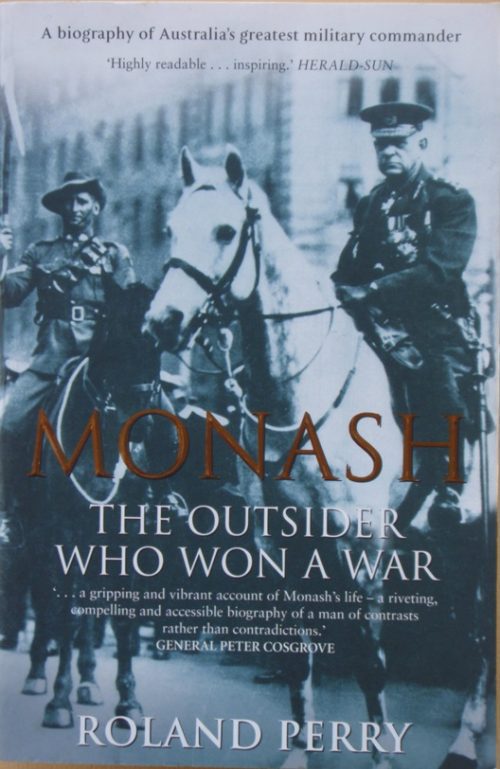Description
Title: Simpson and the Donkey – The Making of a Legend
Author: Cochrane, Peter
Condition: Near Mint
Edition: 1st Edition
Publication Date: 1992
ISBN: 0522845029
Cover: Soft Cover without Dust Jacket – 296 pages
Comments: The story of John Simpson Kirkpatrick – Australian Army Medical Corps (AAMC).
This is the fascinating story of an ordinary man who did extraordinary things in a critical situation. A stretcher bearer on Gallipoli who did not know he was a hero. Day after day he brought hundreds of wounded men down the shrapnel-swept gully. He has become a symbol of the valour and ingenuity of Anzac soldiers. Now a legend, he is remembered as Simpson and his Donkey.
Simpson tried his hand at all manner of jobs. He carried a swag, worked as a cane cutter, a ship’s hand and a coalminer, experiencing life in many parts of Australia. However distant from his mother and sister, Simpson made sure that they received a generous percentage of whatever pay he was able to earn. On 25 August 1914, shortly after the First World War began, he enlisted in the AIF and began training at Blackboy Hill camp near Perth. His motivation for enlisting, it appears, had more to do with the prospect of returning to England than with any particular desire to be a soldier.
Like many who shared his reason for joining, Simpson was disappointed when the first Australian soldiers bound for the war were disembarked for training in Egypt. Having been posted to the 3rd Field Ambulance, he was among those who landed at Gallipoli on 25 April 1915. Though a stretcher bearer, Simpson decided his task could be better accomplished using a donkey to carry his wounded charges.
Just three weeks after the landing, Simpson was killed by a Turkish bullet during one of his morning journeys up Monash Valley to retrieve wounded men. Widely believed to have already achieved a measure of fame during his brief time at the front, it now appears more likely that the Simpson legend only grew after his death. Peter Cochrane, in his 1992 book Simpson and the donkey, outlines the way in which Simpson’s story was used for a range of propaganda and political purposes, particularly as manpower crises threatened to undermine the AIF’s fighting ability during the war.
Cochrane, having demonstrated the extent to which embellishment and sometimes outright falsehoods have served to obscure the real Simpson, described a man who was as flawed as any other, but whose bravery is not disputed. He remains, nevertheless, one of the most famous of the men who served at Anzac. His fame is all the more interesting for the fact that, unlike other celebrated figures from the campaign, such as Jacka, Simpson was a non-combatant. In the intervening decades there have been calls for Simpson to be awarded a retrospective Victoria Cross and, although he won no medals at Gallipoli, Simpson is commemorated in paintings and with a prominent bronze sculpture at the Australian War Memorial in Canberra.
John Simpson Kirkpatrick, a stretcher bearer whose brief life ended early in the Gallipoli campaign, is better known today as ‘the man with the donkey’. One of the AIF’s most well-known figures, Simpson was, like many of his comrades, an Englishman. Born on 6 July 1892 at Shields in County Durham, he joined the merchant marine at the age of 17 and began a life of wandering that eventually led him to Australia.





